Australian Tropical Rainforest Plants - Online edition
Austrocallerya pilipes (F.M.Bailey) J.Compton & Schrire



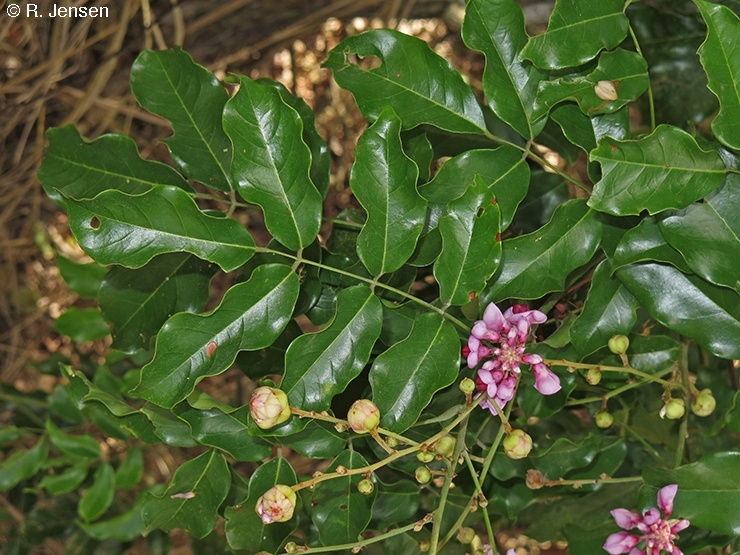
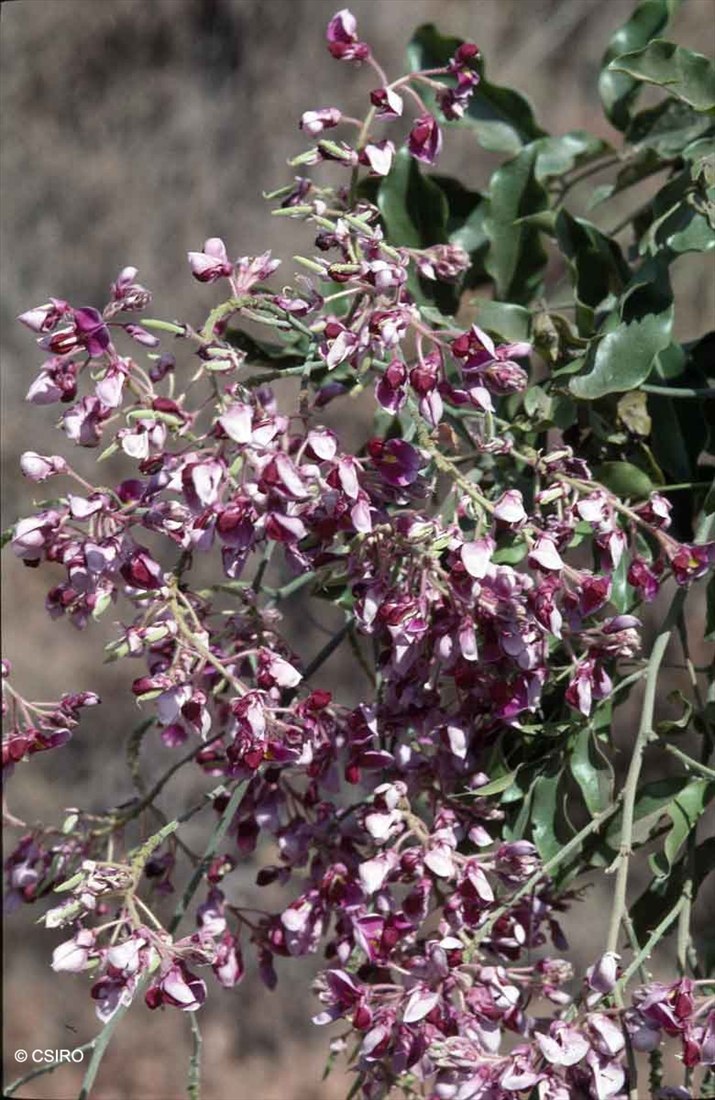

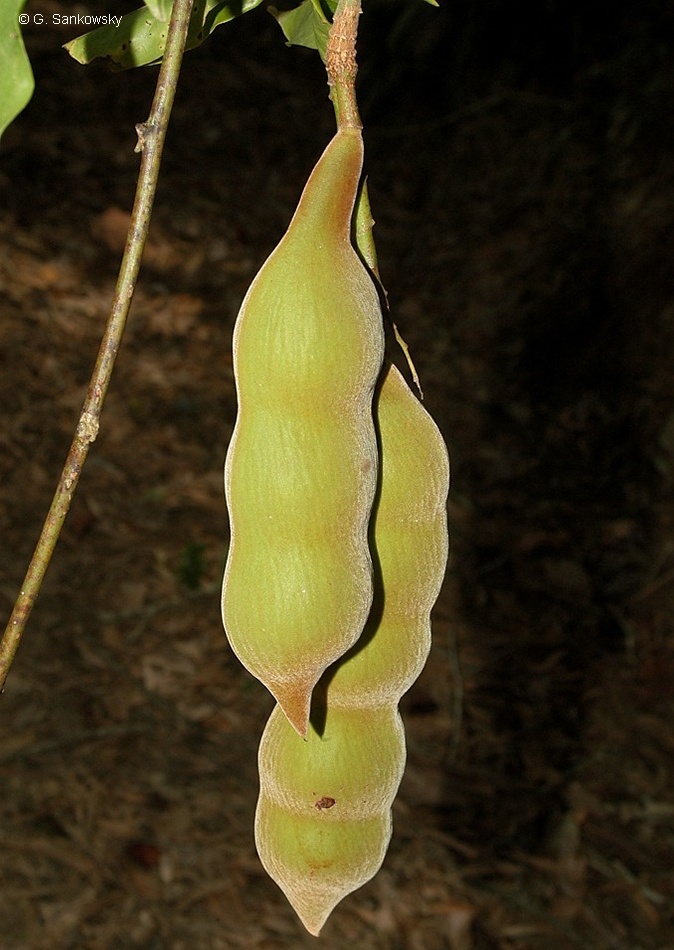

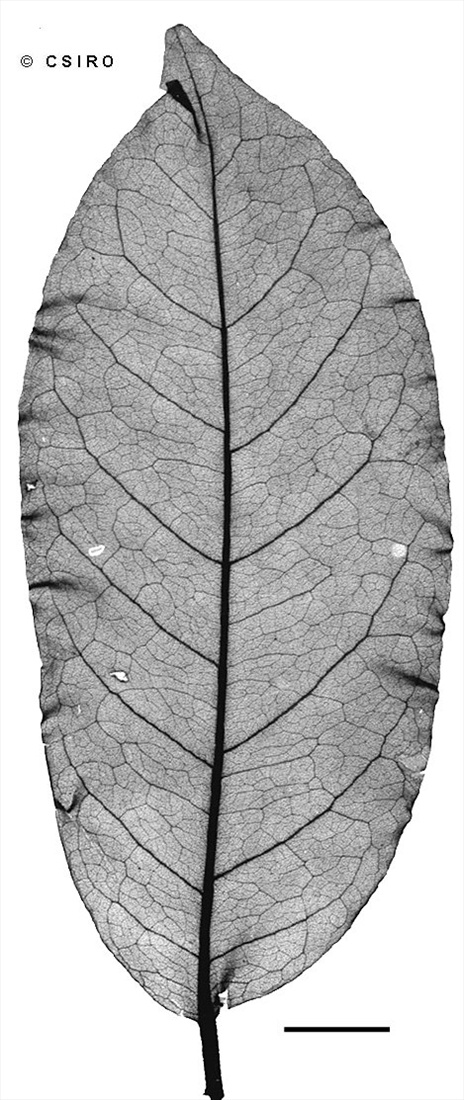
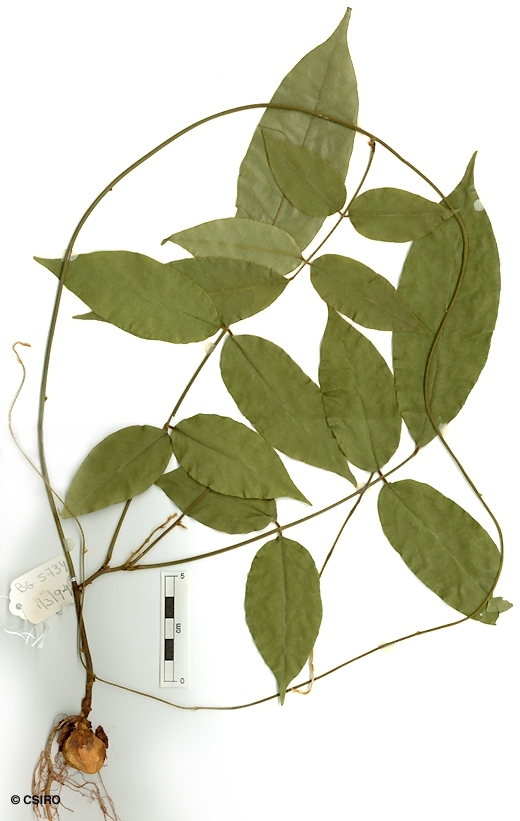
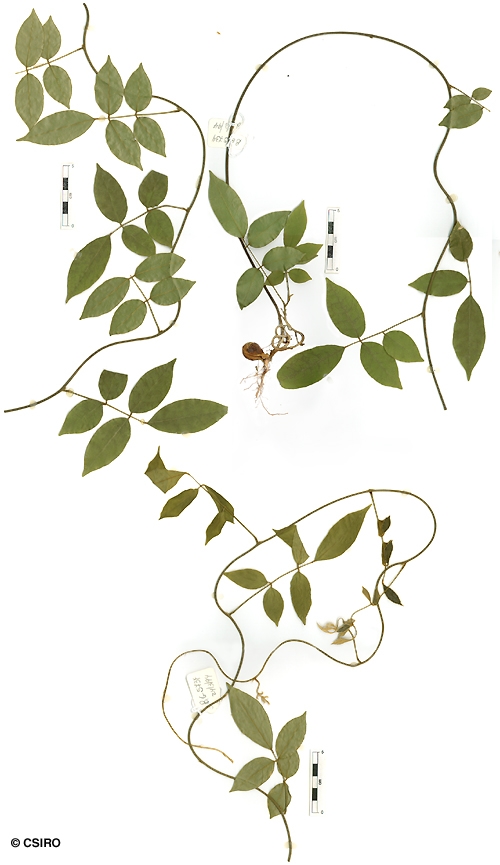

Compton, J.A. et al (2019) Phytokeys 125: 89.
Northern Wisteria
Vine stem diameters to 8 cm recorded; bark tan-coloured with longitudinal grooves and often with a cross-hatched pattern; new stems brownish with sericeous pale golden hairs, older stems developing pale striations and with less dense hairs, lenticels absent. Indumentum pale-golden or rusty. Orange granular stripes usually visible in the blaze. Exudate emerges from the inner blaze. Stipules caducous, narrowly filiform, 2-6 mm long and ca. 1 mm wide at base, sericeous.
Leaf rachis + petiole 75-250 mm long, moderate to sparse short prostrate hairs present, stipels absent; pulvinus 8-15 mm long and 3-6 mm wide; petioles 35-105 mm long; lateral petiolules 3-9 mm long, pubescent; leaflets 5-9, discolorous, elliptical, oblong-elliptical or obovate, 42-145 mm long and 19-75 mm wide, leathery; upper side shiny and glabrescent to glabrous; underside sericeous to glabrescent with hairs denser along primary vein, becoming sparser on older leaflets but some hairs always persisting, especially along primary vein and on margin, base cuneate or rounded, apex shortly acuminate with an obtuse tip; margin undulate, may be scarious; primary vein on upper side depressed and on underside raised or +/-flush towards apex; secondary veins 7 or 8 pairs, slightly raised on both sides of fresh specimens and +/-flush on upper side of dried specimens, angle of divergence from primary vein 40-60 degrees, forming loops 2-4 mm from margin.
Inflorescence a panicle (sometimes leafy), 100-400 mm long; rachis 1-3 mm thick at base, sericeous with short appressed hairs; brachyblasts conspicuous to naked eye, wedge-shaped, >1 mm long; bracts cupular, obovate to broadly obovate, 8-15 mm long and 8-12 mm wide, green to pink, apex shortly cuspidate, abaxially and adaxially sericeous, margin ciliate; pedicels 6-18 mm long, reddish, hairs erect and much longer than hairs on rachis; bracteoles filiform, 5.5-7 mm long, pink, pubescent with long appressed pale golden hairs interspersed with shorter and wider white hairs. Flowers: calyx cup-shaped, ca. 4 mm long and 3.5 mm wide, central tooth ca. 5 mm long, lateral teeth ca. 3 mm long; upper lobes 4.5-5 mm long, sericeous, reddish with pink lobes and teeth; standard orbicular, 13-22 mm long (including claw 2-3 mm long) and 14-18 mm wide, pink or purplish-pink, abaxially minutely pubescent, adaxial surface with minute hairs near apex, base cuneate or obtuse; nectar guides limegreen or yellow; wings ca. 11 mm long (including claw 3.5 mm long), ca. 5.5 mm wide near apex, pink or purplish-pink, glabrous, upper auricle triangular ca. 1.25 mm long; keel ca. 11 mm long (including claw ca. 4 mm long), ca. 4 mm wide at apex, dark reddish, glabrous except ciliate suture line along underside, upper auricle cordate or sagittate-geniculate ca. 0.5 mm long; disc tubular, sheathing the ovary stipe, apex toothed, glabrous; ovary cylindrical with a very short stipe and attenuate apex, ca. 7.5 mm long, sericeous along suture line; ovules 5 or 6.
'Seed' large, still attached to the seedling. First pair of leaves pinnate each with 5 leaflets. Stem and terminal bud clothed in golden brown hairs. Stipules filiform, about 3 mm long. At the tenth leaf stage: leaf pinnate with 5 leaflets. Stem, young leaves and terminal buds clothed in brown or pale brown silky hairs. Most hairs on the stem point downwards. Leaflet blades about 3-6.5 x 1.5-2.5 cm, lateral leaflet stalks about 2 mm long, stalk on the terminal leaflet about 10 mm long. Stipules hairy, about 5 mm long. Seed germination time 70 days.
A large and showy climber that produces large bunches of pinkish purple flowers.
Millettia pilipes F.M.Bailey, Catalogue of the Indigenous and Naturalised Plants of Queensland : 108(1890), Type: Johnstone River, T.L. Bancroft; holo: BRI?; iso: K. "Australia, Queensland, Cook pastoral district, “Johnstone River, Dr. Thos. L. Bancroft, large climber”, 1885–1886, T.L.Bancroft s.n., BRI-AQ0022887 (BRI, holo.!); BM000810924 (BM, iso.!)". Callerya pilipes (F.M.Bailey) Schot, Blumea 39(1/2): 29 (1994). Wisteria pilipes (F.M.Bailey) Sprague, Gardeners' Chronicle. London. Series 3 36: 142 (1904).





